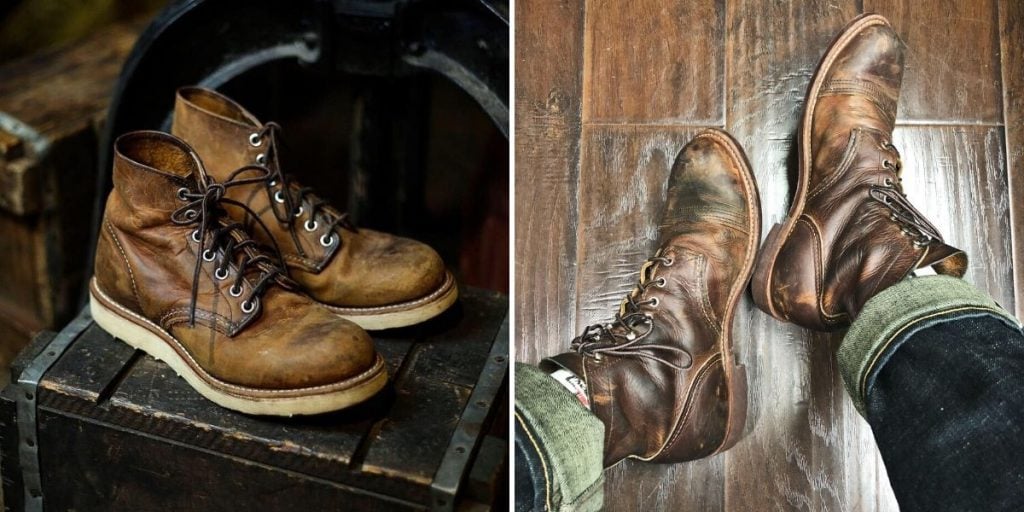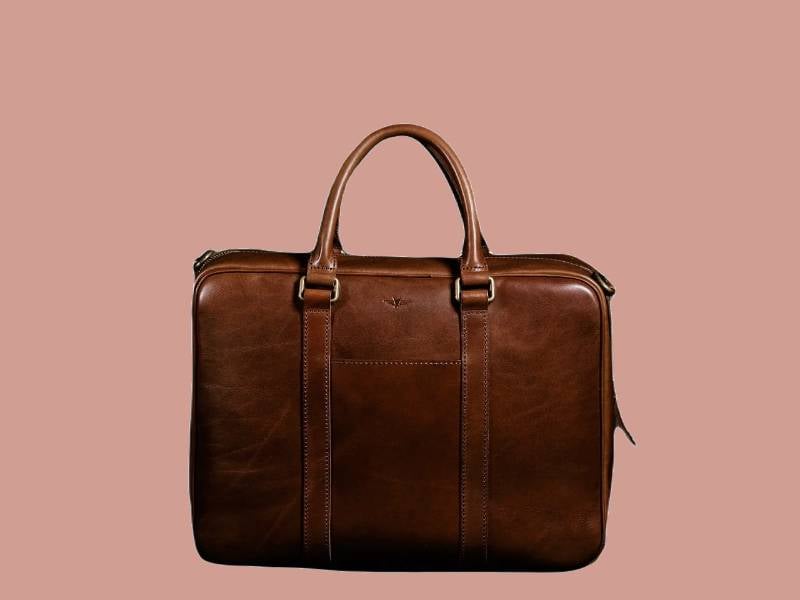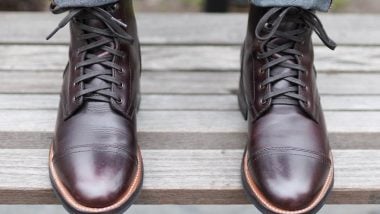What Is Patina? A Guide to Leather, Denim, and Watches
If you were to ask the average person on the street what ‘patina’ is, you’d likely get some variation of “Isn’t that when copper turns green?” The shortest answer is, yes, that is indeed one example of patina. However, this mystical buzz word is not limited to discolored metal and has far more power than most people realize. Patina can define entire collector communities, drive enthusiasts past the brink of obsession, and even at times be the difference between five and six digit auction results.
At its core, patina is the change in physical appearance of something due to age or wear. But this rather mundane definition belies the depth of passion, and often romanticism, associated with the use of the word. Patina is the evidence of time gone by and adventures lived.
That is to say, patina tells stories.

Leather Patina
A vintage bomber jacket. An old pair of leather boots. An antique briefcase. There is something evocative about these objects. The character of old, well-traveled, supple leather just can’t be beat. For many a leather enthusiast, this character is the end goal when a new piece is brought into the collection.
How to Patina Leather
It is in the depth of colors and textures that leather shows its years, hinting at the journeys endured and miles walked. But how can you ensure that the new pair of Chromexcel boots you’ve just purchased will develop such character of their own? While there is no substitute for time itself, the right combination of care, maintenance, and a little loving abuse, will ensure that your leather develops the patina that dreams are made of.
Further Reading

11 Best Leather Briefcases for Men in 2024: High-End, Budget, Vintage, and More
We’ve tested 11 leather briefcases to find the most durable, professional, and valued ones on the market. Learn more →
To begin with, different types of leathers age differently. The style of tanning and the grade of leather will play the biggest role in how it ages. Broadly speaking, full grain leather, if properly maintained, is the most likely to develop rich patina. Full grain comes from the outer most layer of the hide and as such has natural variations in color and texture due to the life of the animal.
Properly cleaning and conditioning the leather will ensure that, as the leather breaks in and ages, those natural details will be added to and enhanced by wear and tear. Using conditioners that don’t contain wax and steering clear of dyed shoe polishes will allow the leather to age in a more natural way. In keeping with the concept that patina tells stories, the idea is to let your leather age in a way that shows the life it has lead.
[Related: The 5 Best Leather Conditioners]

Avoiding Leather Patina
Now, that it isn’t to say that all patina is desirable.
Indeed, the appeal of patina can be fairly subjective (more on that later). Aside from keeping a pair of shoes or a leather jacket in the closet for its entire life, there is no fountain of youth for leather. If you use it, it will begin to show age. This is where waxes and polishes can be of value. A pair of sharp black calf skin oxfords, for example, will live longer and look as snappy as the day they were made if they are treated with care.
‘Sealing’ leather with mink oil for water resistance, avoiding harsh substances like salt, and polishing with regularity will help to stave off that aging process.
View this post on Instagram
Denim and Patina
Like leather, vintage denim is a vast, and often expensive world unto itself – a pair of vintage Levis 501’s, for example, sold for $60,000 back in 2005. In 2018, a pair made in 1893 sold for almost $100,000. Countless fashion brands over the years have offered jeans that are pre-torn, acid washed, faux patched, in an effort to cash in on that vintage vibe without the consumer having to wade through several years of wear first. But if there is one group that is able to resist the seductions of instant gratification, it is the raw denim enthusiast.
It’s All in The Fades
Those who are passionate about denim are more obsessed with patina than almost any group of enthusiast or collector, even if they don’t realize it. Whether the pair of jeans or a denim jacket in question is made to look like a vintage find or is a stiff pair of raw Japanese selvedge denim, the end goal is similar: a go to pair of broken in jeans with that coveted ‘second skin’ feel.
Further Reading

Best Selvedge Denim: 9 Solid Brands Expert Tested for Quality, Value, & Weirdness
We’ve put together a list of the best selvedge denim that’ll fade and age for years to come. Learn more →
Where the raw denim enthusiast is different, apart from an obsessively detailed eye for quality, is that they want their jeans to be a reflection of themselves and they don’t mind suffering to get it. It’s been said before, but raw denim is a labor of love if ever there was one.
Now, volumes upon volumes have been written on how to get the perfect fades in a pair of raw denim jeans. Visiting a denim blog or a reddit thread will result in a deluge of debates on warp and weft of the weave, natural indigo vs synthetic indigo, washing or not washing, soaking, freezing, hang drying… it’s a deep and dizzying well. Methodologies for achieving ‘sick fades’ are far too innumerable to go into here, but the idea is that a pair of jeans should reflect the way that they are lived in. The core of this pursuit is a pair of jeans with as much patina, that is to say as personal character, as possible.
[Related: The 4 Biggest Myths About Raw Denim]

Patina and Watches
Watches tell stories. Sometimes that story begins at an authorized dealer with a brand new watch bought to mark a special occasion. Sometimes that story began decades ago, having been passed down through a family for generations. Other times the story is lost to history, with only small clues that yet remain in the warmth of an aged dial, the dent of a well-loved case, or the passioned etching of an engraved caseback. The stories that watches tell and lives that they represent are as much the pursuit of the true watch collector as the timepiece itself.
Vintage Watches
When it comes to vintage watches there is perhaps no more hotly debated, fiercely defended, and often cliched topic than patina. Global markets are literally moved by the virtue of this romanticized word for wear and tear. With respect to vintage watches, the gravity of what patina is, is not, and is worth, cannot be overstated. With this in mind, it may prove beneficial to take a step back and reframe patina a little bit. As controversial as it may at first seem, patina is damage.
Now, someone who has just bought their first vintage watch because of its patina may have felt their heart stop for a moment. But don’t go panicking just yet. If we really break down what patina means – the change in appearance from physical wear – then patina really is damage. But that doesn’t mean it’s a bad thing. There is good damage, there is bad damage, and then there is the vast ocean of personal preference that lies in between.
How Watches Age
In an attempt to simplify things a bit, and at the risk of over simplifying things, vintage watches age in fairly straight forward ways. A combination of exposure to the elements (moisture, sunlight, oxidization) mixed with the materials used to finish the watch (luminous material, dial paint or lacquer, and case material) can lead to the development of unique characteristics in a watch’s appearance. These characteristics often become highly desirable and sought after by collectors who are willing to pay enormous amounts of money for the best of the best.
Many of the more sought after types of patina in the vintage watch world pertain to the dial (watch face). These include but are certainly not limited to:
- Tropical dials: a dial that began its life as a darker color, usually black, that has faded to a lighter chocolate or brown color.
- Creamy or pumpkin luminous material: radium or tritium that gets darker and loses its luminosity due to radioactive decay.
- Spider or faded dials: fine cracks, discolorations, or development of textural abnormalities caused by exposure to heat, moisture, or mishandling.

Now, historically, if you were to send a tropical Rolex back to the manufacturer, with its richly aged luminous indices and handset, that dial and handset would be replaced with service components as they are no longer up to Rolex’s standards (it is often joked within the watch community that the Swiss word for patina is damage).
Fortunately, many manufacturers have gotten wise to the fact that collectors really dig these aged characteristics. When considering the fact that the difference between the value of a tropical watch and a non-tropical watch can be tens of thousands of dollars, one shudders to think of the value destroyed in watch service centers over the decades. But this fact underpins the subjectivity of the topic — one company’s defective dial, is another man’s holy grail.
The Takeaway
Old things are cool. More so, old things are enchanting. The reason that vintage watches, faded jeans, and rich leather can be so captivating and desirable is because of the authentic character that they have developed over the years. It is within these mysteries that authenticity is contained. Patina is that depth of character that can only come from years of use and love. It is the evidence of those stories that remains in the form of oxidization and scars.
Troy Barmore is a Senior Timepiece Specialist at Analog/Shift.
Featured image via Red Wing Shoes Singapore on Facebook and u/tyler_brandt on Reddit










I like “heritage” boots and leathers, but the pics of the patina make the boots look like crap. I dont spend $$$ for good quality boots so that they look like they have been to war. I want them to look as when I bought them for as long as I can. Like good quality shoes, I used conditioners to maintain their appearance and I take care of them. I also have different color boots so that I am not always wearing the same pair forever. I like the greater depth of color that comes with age, but I dont get the appreciation of the boots in the pics…sorry Though I understand others do…
That’s fair! There aren’t a lot of guys who really take care of their stuff and condition their boots over many years AND take good pictures of them. Send me some pics you like and I’ll put them in the article, Glenn!